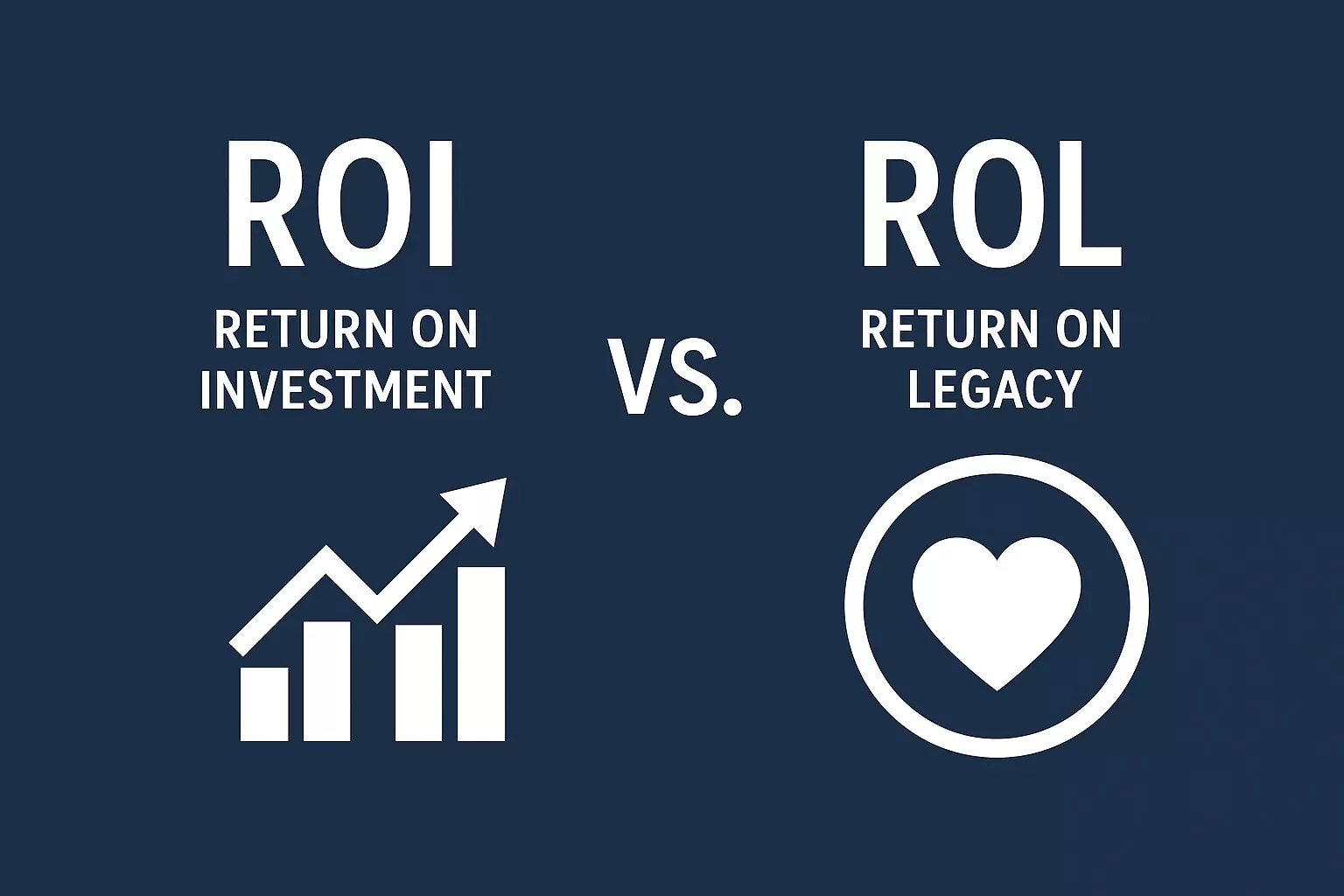ROI Vs. ROL: Why Wealth Advisors Should Be Talking About Return On Legacy

In the financial world, few metrics are as central—or as scrutinized—as ROI: Return on Investment. It’s the cornerstone of every performance conversation, the measure by which success or failure is ultimately judged.
But as wealth grows, something subtle yet profound shifts. The question becomes less about how much a portfolio earns and more about what it means. Increasingly, high-net-worth individuals and families are asking their advisors to help them measure something beyond financial gain: the impact of their wealth on the world, their values, and the generations who will follow.
It’s time we start talking about ROL—Return on Legacy.
The Missing Metric in Wealth Management
Advisors are already fluent in ROI, risk tolerance, and diversification. But very few are equipped to have meaningful conversations about purpose. That’s a missed opportunity, because today’s clients—especially next-generation inheritors—are redefining what wealth means.
They’re not just asking, “What will my money do for me?” but “What will my money do because of me?”
ROL captures that mindset shift. It’s a way of understanding success that doesn’t replace ROI but complements it—recognizing that a well-designed legacy plan can be just as intentional, data-driven, and results-oriented as any financial strategy.
Why Advisors Can’t Afford to Ignore Legacy Conversations
When philanthropy enters the picture, many advisors tread lightly. It can feel abstract, emotional, or outside the traditional scope of financial advising. But here’s the truth: legacy planning isn’t just about estate documents or charitable bequests—it’s about aligning money with meaning during a client’s lifetime.
And clients are craving that alignment. Studies consistently show that donors who feel personally connected to the impact of their giving are more generous, more loyal, and more likely to involve their families in long-term plans. For advisors, this represents not just a moral opportunity but a strategic one: deepened client relationships, multigenerational engagement, and differentiated value in a crowded marketplace.
By guiding clients toward a clear Return on Legacy, advisors help them move from transactional giving to transformational impact.
The NGO Insider’s Perspective: What Real Impact Looks Like
After 30 years working inside NGOs, I’ve seen the full spectrum of philanthropy—from breathtaking generosity to well-intentioned misfires. What separates the two usually isn’t the size of the gift, but the clarity of the partnership.
Philanthropy that works starts with listening. The most impactful donors are those who understand that NGOs aren’t passive recipients of charity—they’re complex, mission-driven organizations that need strategic collaboration, not just funding.
Advisors who understand this can help their clients ask the right questions:
-
What does success look like for the organization—and how is it measured?
-
How will our contribution strengthen systems, not just support programs?
-
How can our family or business engage beyond the checkbook?
These aren’t just philanthropic questions. They’re legacy questions.
Translating Purpose into Practice
For advisors, integrating ROL into client conversations doesn’t require a philanthropic degree—it requires curiosity and courage. Start by asking clients open-ended questions that connect money to meaning:
-
“Which causes or issues have been most important to you or your family?”
-
“What kind of difference would you want your giving to make?”
-
“If your grandchildren could describe your legacy in one sentence, what would you want them to say?”
These questions do more than unlock generosity; they unlock identity. They transform advisory meetings from portfolio reviews into purpose-driven discussions that build trust and emotional engagement—both essential to long-term client retention.
Measuring the Immeasurable
Of course, the challenge with ROL is that legacy is harder to quantify than ROI. But it’s not impossible. Advisors can track progress through tangible milestones:
-
The number of lives touched, or programs funded.
-
The sustainability of the initiatives supported.
-
The continuity of family involvement in giving decisions.
Just as importantly, advisors can help clients articulate the intangible metrics—the sense of fulfillment, connection, and meaning that financial returns alone can’t deliver.
When these qualitative and quantitative measures are combined, they form a holistic picture of success—one that balances wealth accumulation with wealth contribution.
The Future of Wealth is Purpose
In a rapidly changing philanthropic landscape, the advisors who will lead the next decade are those who can bridge the gap between finance and purpose. They’ll understand that legacy isn’t something to be written at the end of a life, but something to be lived throughout it.
ROI will always matter. But for clients seeking meaning as much as money, Return on Legacy may prove to be the most valuable investment of all.
More By This Author:
How Women Small Business Owners Can Reassess During a Recession
Will Covid Drive Companies To Relocate To All-Inclusive Tropical Locations? This Man Is Betting Yes.
How To Attract Funding For Your Business During The COVID-19 Pandemic




Loading comments, please wait...